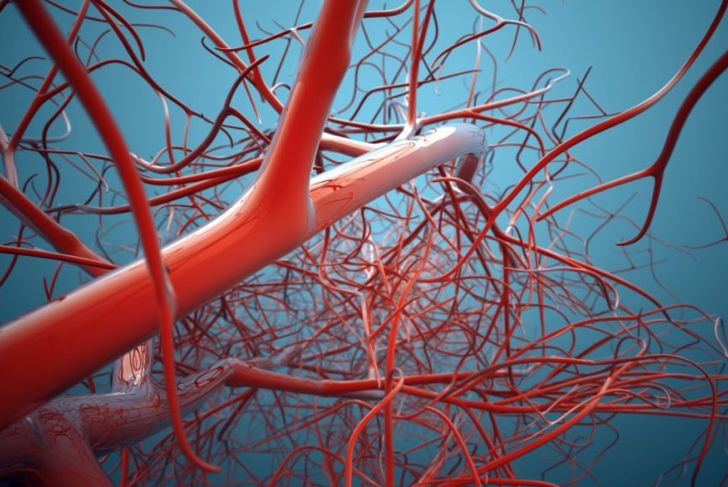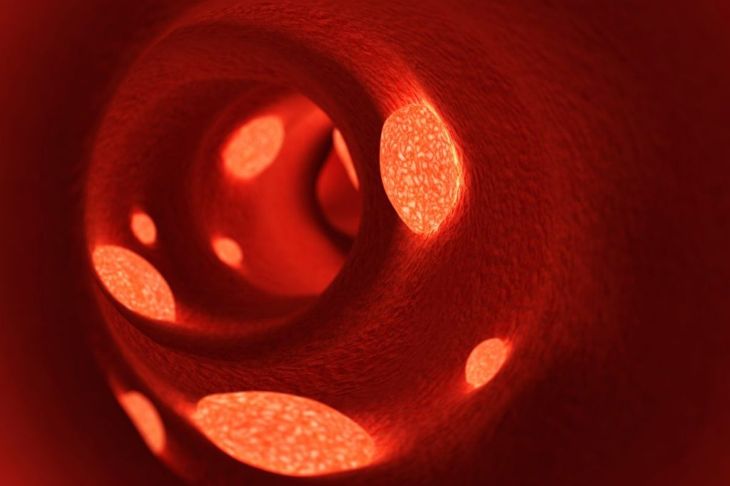Leukocytoclastic vasculitis or hypersensitivity vasculitis is a condition involving inflammation of small blood vessels. The symptoms and risks of leukocytoclastic vasculitis are well-known, although the specific disease process is not fully understood. The main characteristic of leukocytoclastic vasculitis, commonly referred to as LCV, is leukocytoclasis, damage within blood vessels due to debris left by neutrophils, a type of immune cell. This condition may be acute or chronic. Chronic LCV can develop in the skin or kidneys, central nervous system, heart, lungs, or gastrointestinal tract.
Acute LCV
LCV on the skin presents as dark red or slightly purple raised lesions. Blood vessels in the skin leak and cause dark bruises. Several lesions together often affect the legs and buttocks and are less common on upper limbs. Lesions may be painful and itchy but can also be asymptomatic.
Chronic LCV
Symptoms of chronic, systemic LCV include fever, joint pain, muscle aches, abdominal pain, nausea and vomiting, coughing, numbness, generalized fatigue, and blood in urine or stool. The individual may experience continuous or recurring lesions (flare-ups). LCV characterized by recurring lesions without systemic involvement is called chronic cutaneous LCV.
Diagnosis
Diagnosing LCV includes establishing the cause, if possible, and finding or ruling out infections and other disorders such as hepatitis or HIV. If doctors can trace the cause to an allergic reaction or medication, treatment is much simpler. Laboratory tests may include a complete blood count, evaluation of liver and kidney function, and urine analysis. A biopsy of the affected area will confirm the diagnosis.
Portra / Getty Images
Henoch-Schönlein purpura
Henoch-Schönlein purpura or HSP is a specific type of LCV that can occur in adults but is much more common in children. HSP often develops after a viral respiratory illness. Complications of systemic HSP in adults include arthritis and kidney disease, while involvement of the gastrointestinal tract and kidneys is more common in children. Malignant tumors can cause HSP in older men.
Causes
LCV can result from an allergic reaction to medications, food, food additives, and various other substances. Infections from viruses or bacteria, malignant tumors, or autoimmune disorders are also common causes. Other diseases and disorders may trigger LCV. Roughly half of all diagnosed cases of LCV are idiopathic, which means there is no known cause.
Treatment
Treatment is based on medical history and the cause or triggering event. Initial treatment of LCV often includes analgesics to relieve pain. Treatment of acute LCV limited to the skin generally involves rest, elevating the legs, applying ice packs, and removing or avoiding the triggering substance. Nonsteroidal anti-inflammatory medications and oral steroids may relieve the discomfort of arthritis related to systemic LCV. Immunosuppressant drugs are an option if the doctor suspects an autoimmune disorder is to blame.
Complications of ulcerating lesions
LCV is not usually fatal but can lead to poor outcomes or death in some circumstances. Ulcerating lesions due to damaged blood vessels can destroy tissue in the epidermis and underlying dermis of the skin, or even tunnel into fat beneath the skin. These lesions are often surrounded by dead tissue, so they are prone to infection and heal slowly.
Renal Disease
Renal disease, characterized by infection or damage in the kidneys, is one of the most common and serious effects of systemic LCV. Kidney damage may happen immediately after LCV first occurs or it may not be apparent for several weeks. Medical professionals examine the urine for protein or blood to determine the existence or extent of kidney damage. Several medications used to treat LCV also present a risk because it is difficult for the kidneys to metabolize certain drugs.
Disease Process
Leukocytoclastic vasculitis is not completely understood, but current theories suggest the disease process is due to various components of the immune system deposited in the blood vessels of the skin. Blood vessels in skin often have slower flow and less volume than vessels in other areas of the body. Vasodilation of blood vessels in cold temperatures further impairs blood flow, so damage is more likely to occur, leaking red blood cells into surrounding tissue.
Prognosis
The prognosis for people affected by LCV is usually very good, but systemic involvement may lead to fatal complications without proper treatment. Chronic cutaneous LCV can limit physical activity due to the pain or itching of skin lesions. Ulcerating skin lesions are always prone to infection but present additional risk to those with diabetes. The immunosuppressant medications doctors sometimes prescribe to treat chronic LCV also leave the body vulnerable to opportunistic infections due to a weakened immune system.

 Home
Home Health
Health Diet & Nutrition
Diet & Nutrition Living Well
Living Well More
More




















